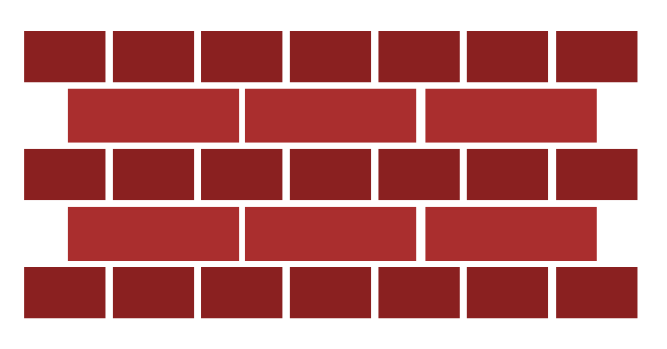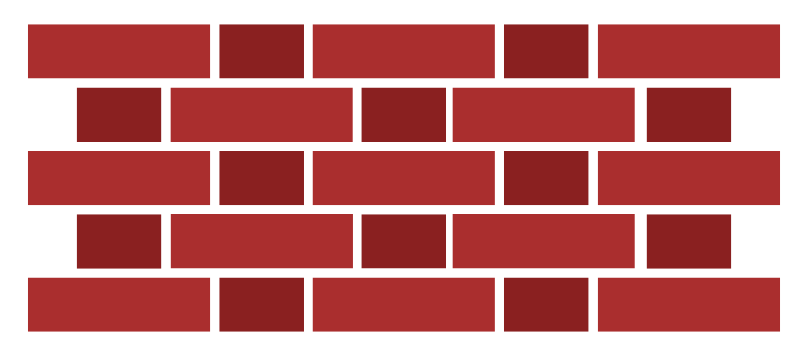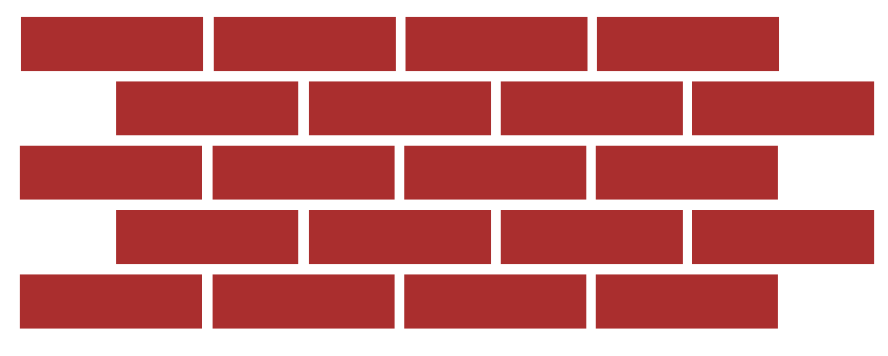A brick bond is simply the pattern in which bricks are laid to build a wall or structure. While different bonds do affect how the wall looks, there’s more to it than just appearance. The bond plays a key role in the strength, stability, and long-term durability of the brickwork. It also impacts how efficiently and quickly the bricks can be laid so choosing the right bond can make all the difference on-site.
English Bond – Strength and Reliability
When strength is the main concern, English bond is a solid choice. It’s made up of alternating rows of stretchers and headers, which helps spread weight evenly and creates a strong, stable wall. It’s commonly used for load-bearing work like foundations and retaining walls.
You won’t get much of a decorative finish with this bond, but what it lacks in looks it makes up for in performance. It’s also one of the oldest and most reliable patterns around, and many traditional buildings across Greater Manchester still stand firm today thanks to English bond.
Best used for:
Load-bearing walls
Foundations and retaining structures
Heritage or traditional builds where strength comes first

Flemish Bond – Style and Symmetry
When appearance matters as much as performance, Flemish bond strikes a great balance. It features alternating stretchers and headers within the same course, creating a neat, symmetrical pattern that adds a decorative finish to any wall. This bond is often used where the brickwork will be on show, like garden walls or feature sections.
It takes a bit more time and care to lay than other bonds, but the visual payoff is worth it. Flemish bond is a popular choice for heritage work and high-spec residential builds, especially where character and detail are important.
Best used for:
Decorative or feature walls
Heritage and conservation projects
Residential builds where appearance is key

Stretcher Bond: Speed & Simplicity
When speed and efficiency are the main priorities, Stretcher bond is the go-to option. It’s made up entirely of stretchers, with each course offset by half a brick. This makes it quick to lay and ideal for large-scale modern builds where time and cost are key factors.
While it doesn’t offer the same strength as some traditional bonds on its own, it works well in cavity wall construction, where structural support is provided by wall ties. Stretcher bond is commonly used in housing developments and domestic builds across the UK.
Best used for:
Modern housing developments
Internal and external cavity walls
Projects focused on speed and simplicity

Choosing the Right Bond – How site type, budget and design influence the bond used.
Choosing the right brick bond comes down to the needs of the project. Site type, budget, wall function, and design requirements all play a part in deciding which bond to use.
On a modern housing development with tight deadlines, Stretcher bond makes sense for its speed and simplicity. If the wall needs to carry significant weight or provide structural support, English bond is the more reliable choice. And when the focus is on appearance, Flemish bond offers the best of both strength and style.
Each bond has its place, and understanding the strengths and limitations of each one is part of the craft. Whether it’s speed, strength, or style that’s needed, a well-chosen bond shows pride in the work and respect for the job at hand. It’s that knowledge on the trowel that sets good brickwork apart.
